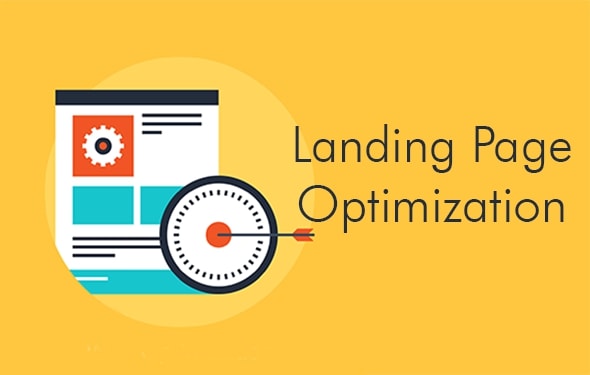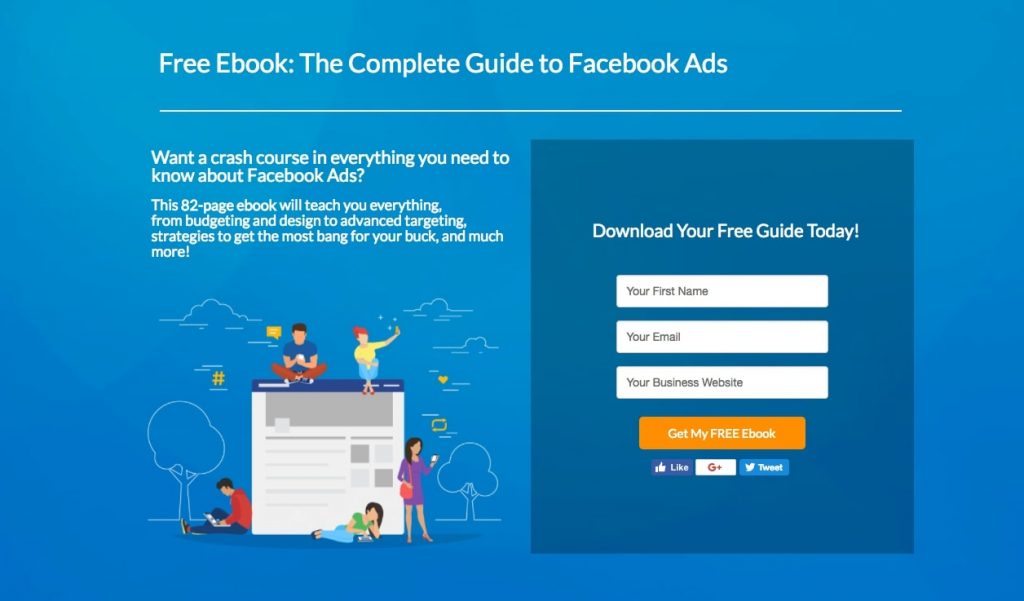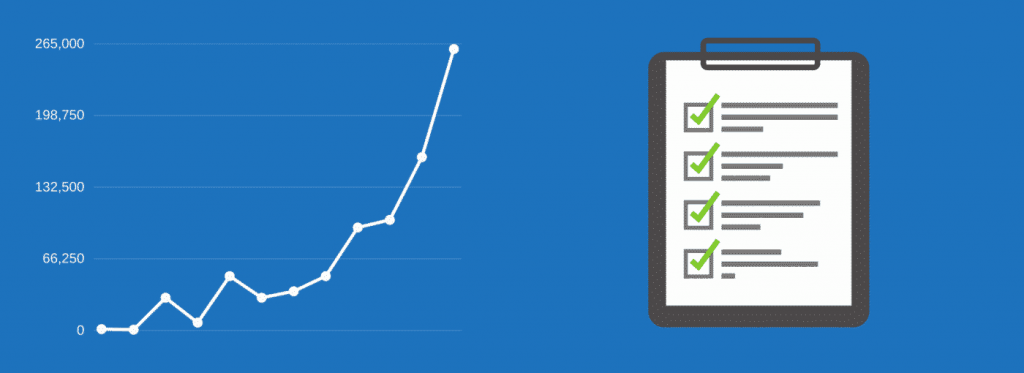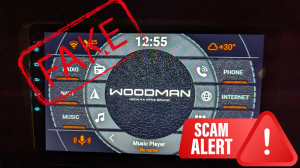Measuring and analyzing the performance of a landing page SEO can be frustrating at times. Especially if you pay attention to the wrong data and metrics. An analysis and effective landing page SEO is so important! Because the more information you have about the performance of a website, the more targeted you can adapt all online marketing strategies – and attract more traffic, more visitors and potential customers to your website.

- But what makes efficient landing page SEO?
- What do you have to consider and which criteria are important?
Landing Page SEO Definition and What to Remember
A landing page in online marketing refers to a web page that serves as the entry point for a website (or a specific area of a website) and attracts visitors. Google AdWords defines two criteria for high-quality landing pages:
- Relevant, useful and original content
- Promoting transparency and trustworthiness of a website

According to Google AdWords, effective landing pages rely on quality instead of quantity – and ideally focus on a maximum of two overall goals:
Landing Page SEO:
- Landing pages focus on an excellent search engine ranking to generate traffic (“click-through“) and/or lead generation and conversion rate: landing pages are used to convert leads and a specific action that the reader should take (“Lead capture” ).
First, decide on one of the goals before pursuing both goals at the same time. Start best with landing page SEO or “click-through websites”. In retrospect, you can still optimize your landing page for a higher conversion rate. When you’re done with landing page SEO, you’ll automatically have more traffic. You’ll see, the user behavior of your landing page will increase significantly.
So what do you have to consider for efficient landing page SEO? There are many possible answers to that. Most importantly, your landing page is informative and helps the reader discover or learn something. In other words, Landing Page SEO is all about:
- valuable content
- useful resources
Less is about product placement or selling something. Of course, if the content is right, you can still use your SEO landing page for marketing purposes, such as content marketing or storytelling marketing .
The following criteria should fulfill a good landing page SEO:
- The site is filled with added value for the reader
- It is not expected in the first instance that the reader buys something from the site
- The page contains editorial links
- No upselling. The call-to-action leads to another landing page. For example: “Learn more about XYZ” here and not “Buy Now Offer XYZ”
The following goals should be kept in mind when optimizing your landing page SEO:
-
- Reduction of the bounce rate. This increases/decreases if visitors to the landing page do not visit any other pages on your website
- Increase the retention time of the readers. The longer readers stay on your page, the higher the chance they will consume your content. That’s why Landing Page Design is so important. This increases the likelihood that readers will react to your call-to-actions – and click on your offer.
-
- Increase the click-through rate (CTR) from the search results. Increasing your traffic will bring more visitors, increasing the chance of qualified leads and customer growth.
How to check your landing page for SEO
![]()
With the following 4 steps, you can check your landing page SEO:
- Set Destination URLs
Track Your Landing Pages Tracking domains is the foundation of any SEO strategy because it provides you with lots of valuable information about the potential for optimization. Choose the URL you want to optimize and use an analysis tool of your choice (eg Google Analytics ). - Check keywords
Are your landing pages ranked for the right keywords? Do the keywords match the topic of your page? An analysis of the competitors can also make sense here. - Check the page performance
Here, it is important to capture the overall performance of the long pages. For example: How much traffic does it generate? How many qualified leads do you get and how high is the bounce rate? - Check Meta Tags
The metadata plays an important role for Landing Page SEO. Check: Do the titles and descriptions comply with Google’s guidelines? Do you have a call-to-action?
If you have looked at these criteria, you will have a pretty accurate impression of whether your landing page SEO is optimized or if there is still a need for action. If this is the case, then in the following section you will learn how to make your landing page SEO successful.
In 7 easy steps: How to optimize your landing page SEO
Step 1: Know your keywords
Before you can optimize your landing page, you should know your keywords (“keywords”). This can be both individual words (eg “advertising agency”) as well as so-called long-tail keywords or short sentences (eg ” SEO agencies in Florida”). Take enough time to find the ideal keywords for your landing page and especially your target audience . Because without the right keywords every website is doomed to failure. Now have a short brainstorming session and write down possible keywords for your landing page. The more good keywords Google finds on your page, the better it gets rated. Conversely, your positioning on Google will then go up, so you can achieve a good ranking.
Check your ideas on Google, Bing, Yahoo & Co.
- What are they showing you?
- Do you get many hits?
- Are there any websites similar to your landing page?
If not, you may want to reconsider your keywords. Unless you’ve just found a truly unique niche, most people have a different opinion on search terms on the Internet. Did you receive any relevant suggestions from the search engines? Add them to your list.
Now let’s go into detail. Choose appropriate tools, such as:
- the Google AdWords Keyword Planner,
- SEMrush,
- KWFinder
- Wordtracker
Feed them with the words from your list. This will give you additional suggestions and lots of useful information on how many times a particular keyword was searched. Choose the words that will produce the best results and save them in descending order.
Now decide a keyword that best reflects the topic of your landing page and at the same time is at the top of your list. This will be your main keyword and the other top 5 keywords from your list will be your additional keywords.
The keyword research can be quite expensive, but is actually one of the most important step in SEO online marketing and search engine optimization. The good news: as soon as this step is done, the next steps go much faster. The hardest part of search engine optimization is now done.
Step 2: Title Tags: The first impression counts
The first impression also counts in digital life. How do you make the best impression? With the right title tags of search engine optimization. For Bots and the Google Crawler, the title tags are like first getting to know each other or handshaking for the first time. You have a maximum of 70 characters and each one of them has to sit. So that this initial contact is positive, you should not be shy and integrate your main keyword in any case in your title. So the bots immediately recognize what the topic of your landing page is. If there is still some space left, you can also try to add additional keywords.
- Try not to use 65 characters anymore
- 70 is still in the frame, but not optimal
- When you get a good first impression, you can stand out better from the competition
- Your positioning in the market will be increased.
Step 3: Meta descriptions – your figurehead
Meta tags are often neglected. They are so important and act as your free figurehead on the search results page (also SERPs: “Search Engine Results Page”). These are short snippets of content that appear in search results, usually just below the title and your URL. A crisp and attractive description can set you apart from the competition here.
The rule of thumb: KISS – K eep I t S hort and S imple! Give your landing topic, stay between 150 and 160 characters, use your main keyword and conclude with a convincing call-to-action. The goal: to formulate your meta description so that users can not help but click on your pages.
Step 4: Optimize your URL
A good landing page URL includes your main keyword is the icing on the cake – and is positively rewarded by any search engine. If your main keyword is too long, choose a shorter keyword for the URL (if available and still possible). Too long a URL will be dubious and worsen the user experience. This is not in the sense of landing page SEO. An attractive URL is an important criterion for users. After all, they want to consult a trusting page about their search query.
Step 5: Attention! With a perfect headline
A good title screams, “Read me!” And catches the eye. An excellent title does the same and at the same time pleases search engine crawlers. Again, your main keyword belongs in the title. Bots and crawlers then treat the landing page headline as a signal that this particular page is relevant to the keyword found in it.
Tip: Remember that your main title should always be placed in H1 HTML tags.
Step 6: Content, Content, Content!
The search engine bots love to read. In fact, they need words to work at all. Your main focus when writing for the landing page should always be to get the user to act and present yourself as an expert (content marketing) – but at the same time incorporate your relevant keywords into the text. Try a keyword density of 2-3%. The text must be both appealing for the target audience, but also well translated for your SEO. It can be described as the model of a win-win function. Both parties, both you and the publisher of a landing page as well as your target audience must have added value.
You have to offer the users something that makes them aware of you. What added value you achieve on your side / with your brand? With which offer are the users active? What offer can you offer your target audience that other companies may not be able to offer? You, in turn, have to see that users become paying customers. And that goes above all with good content marketing.
It is important: It is not enough if you prepare your content well. For content marketing, it is especially important that you constantly optimize your landing page. That’s the only way Google recognizes that you’re working on your page and always classifies it as a good landing page. In addition, the top keywords change again and again. This is completely normal. Even trends change year by year. Imagine the optimization as a race. You have to overtake your opponents/competitors. Try to get the best out of you (your page) and you will reach the goal with a good result.
Remember: Constant optimization of your site is the Alpha & Omega in content marketing to be successful in the online marketplace.
Tip: Search engines can still recognize ideal images. You have to help them to recognize and classify your pictures. How does it work? With the alt attribute and IMG HTML tag: Fill in the images on your landing page with short descriptions containing your keyword (s). Unless you do not describe your pictures, Google considers this point negative again. So that does not happen, describe each of your pictures best directly. It’s easy and fast – Google will not be able to expose your landing page to that point.
Bonus Step: Trade the Success of Your Landing Page SEO in Real Time
Not necessary, but very useful: Evaluate the success of your landing page SEO and your marketing strategy regularly. How good is your conversion rate and how you can optimize your conversion rate? How do you best stand out from the competition?
Watch out for general trends and trends on your site, not just your Google index and Google ranking. Key an eye on the user behavior, such as the bounce rate, CTR (Click Through Rate), the traffic and the ratio of clicks. Therefore, our tip: always consider the ranking of your landing pages in the context of the data of Google Analytics and the Google Search Console, So use the behavior of your users and vote your page on it. Do not arbitrarily change your page. Take a close look at the user behavior and start with the points, for example, where the traffic is particularly high. So you not only follow the general trends but above all those of your target group.
The ideal landing page SEO checklist
Check the following landing page SEO checklist to make sure your landing pages meet all the important points:

Landing page address
- The URL contains the main keyword
- Hyphens and underscores are used in the URL
- The URL is SEO friendly and not too long
- The URL is not blocked by robots.txt or XML sitemaps
metadata
- The title tag contains the main keyword (and ideally starts with it)
- The title tag is unique and will not be repeated in the content/website
- The title tag has a maximum of 70 characters (and ideally 65)
- The meta description contains the main keyword
- The meta description has less than 165 characters
- The meta tag is unique and will not be repeated on the domain
- The meta tag includes a call-to-action
Textual content
- H1 tag uses keywords
- The main keyword comes in 2-3% of the content
- The text is divided into different paragraphs and H2 tags
- H2 tags use keywords
Pictures and video files
- All images and videos used have SEO friendly filenames
- All pictures have old tags
- At least one image uses multiple keywords in the alt tag
- At least one image uses keywords in the file name
code
- Little or no CSS and JavaScript
- W3C markup
- Canonical Tag is used correctly or not used
- Website is listed on sitemap.xml and sitemap.html
Other :
- The website targets a maximum of 1-3 similar keywords
- Website / Company has a social media presence
- Website is divisible with social media
- The website has internal backlinks with keywords















Add Comment